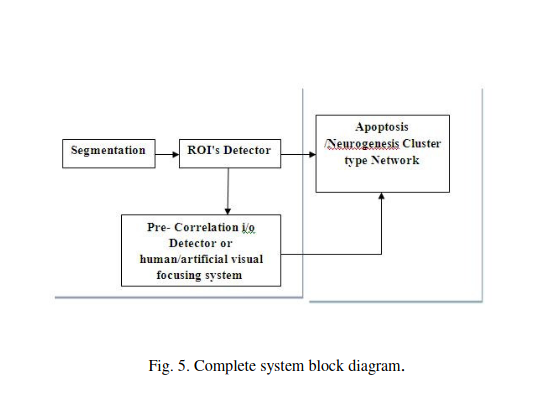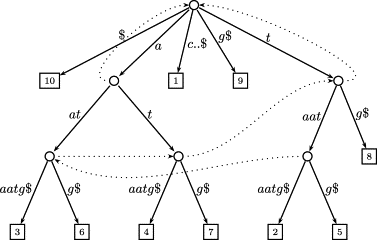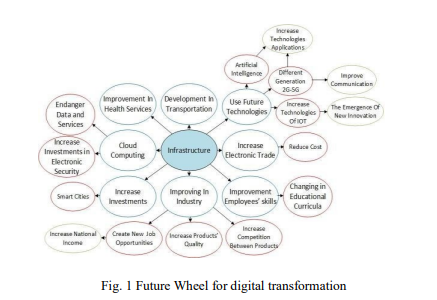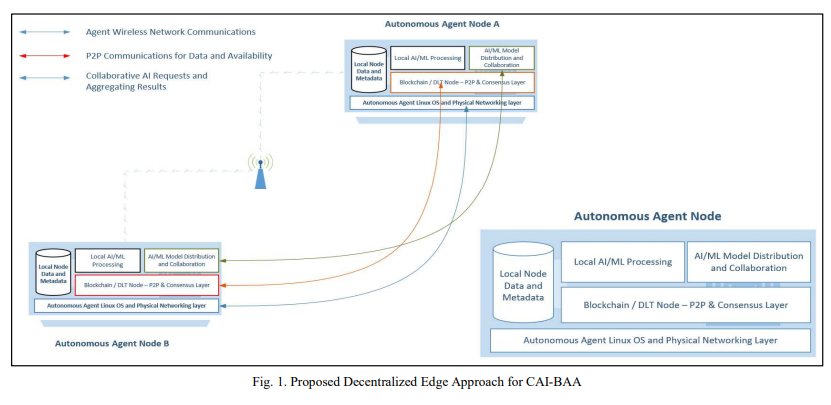Breadcrumb

Novel computational apoptosis-neurogenesis model for multi-abstraction level perception
artificial neural network provides a cybernetic model that is similar to human intelligence in terms of parallel processing, generalization and memory stacking on the same neural network. From the era of neurogenesis, research models expect the rules that govern new neuron to depend on old mature circuitry. Other research models show the existence of catastrophic interference associated with new neurons if species is exposed to variable information content environment. In this work, the model developed provides a theoretical framework for a novel attention sensitive neural network as well as

ITS navigation and live timetables for the blind based on RFID robotic localization algorithms and ZigBee broadcasting
This paper tries to alleviate some challenges facing blind and visually impaired people in public transportation systems by providing them with in-station navigation information and real-time schedule information. Novel system architecture for the Intelligent Transportation Systems (ITS) navigation for blind and visually impaired people based on recent Radio Frequency Identification (RFID) localization technologies, commonly used in robotics, is proposed. Furthermore, a live timetable using a new ZigBee network broadcasting protocol with detailed frame structure is used for provision of real

Monitoring and visualization of large WSN deployments
Recent developments in wireless sensor networks have ushered in novel ubiquitous computing applications based on distributed large-scale data acquisition and interactive interpretation. However, current WSNs suffer from lack of effective tools to support large network deployment and administration as well as unavailability of interactive visualization techniques required to explore and analyze captured sensing data, which is hindering the development of real-life WSN-based ubiquitous systems. Sensor Explorer addresses the above problems by providing modular efficient stream management engine

News auto-tagging using Wikipedia
This paper presents an efficient method for automatically annotating Arabic news stories with tags using Wikipedia. The idea of the system is to use Wikipedia article names, properties, and re-directs to build a pool of meaningful tags. Sophisticated and efficient matching methods are then used to detect text fragments in input news stories that correspond to entries in the constructed tag pool. Generated tags represent real life entities or concepts such as the names of popular places, known organizations, celebrities, etc. These tags can be used indirectly by a news site for indexing

Computing the Burrows-Wheeler transform of a string and its reverse in parallel
The contribution of this article is twofold. First, we provide new theoretical insights into the relationship between a string and its reverse: If the Burrows-Wheeler transform (BWT) of a string has been computed by sorting its suffixes, then the BWT, the suffix array, and the longest common prefix array of the reverse string can be derived from it without suffix sorting. Furthermore, we show that the longest common prefix arrays of a string and its reverse are permutations of each other. Second, we provide a parallel algorithm that, given the BWT of a string, computes the BWT of its reverse

A system for assessing the quality of Web pages
The World Wide Web has brought about an unprecedented explosion in the amount of information available on-line, largely in the form of Web pages. The fact that anyone can publish anything has ultimately led to pages with varying degrees of quality. This paper aims at investigating means for assessing the quality of a random web page and provides a quantitative approach for selecting high quality-content pages. The work was motivated by the need to locate pages that may be considered as candidates for translation. © 2013 IEEE.
Cloud-based parallel suffix array construction based on MPI
Massive amount of genomics data are being produced nowadays by Next Generation Sequencing machines. The suffix array is currently the best choice for indexing genomics data, because of its efficiency and large number of applications. In this paper, we address the problem of constructing the suffix array on computer cluster in the cloud. We present a solution that automates the establishment of a computer cluster in a cloud and automatically constructs the suffix array in a distributed fashion over the cluster nodes. This has the advantage of encapsulating all set-up details and execution of
Replica placement in peer-assisted clouds: An economic approach
We introduce NileStore, a replica placement algorithm based on an economical model for use in Peer-assisted cloud storage. The algorithm uses storage and bandwidth resources of peers to offload the cloud provider's resources. We formulate the placement problem as a linear task assignment problem where the aim is to minimize time needed for file replicas to reach a certain desired threshold. Using simulation, We reduce the probability of a file being served from the provider's servers by more than 97.5% under realistic network conditions. © 2011 IFIP International Federation for Information

Impact of COVID-19 on Information Technology Sector in Egypt
Pandemics raise huge challenges yet brought several opportunities. The sudden attack of COVID-19 revealed the importance of the information technology (IT) applications. The Reliance on the IT sector has become imperative to ensure sustainability and to raise most sectors' performance efficiency, especially the services' ones. This study applied PESTEL analysis to evaluate the current status of IT in Egypt. SWOT analysis was performed to explore points of strength, weakness, opportunities, and threats that face the IT sector in Egypt as a result of the COVID19 attack. The process of foreseeing

Modeling Collaborative AI for Dynamic Systems of Blockchain-ed Autonomous Agents
Artificial Intelligence has been strongly evolving disrupting almost every research and application domain. One of the key attributes - and at the same time an enabler - of today's innovations is the massive connectivity resulted in the opportunity to exploit Artificial Intelligence across distributed network of self-contained smart agents those could range from software bots to complex devices like autonomous vehicles, IoT collations, UAVs and Robot Swarms. Such heterogenous networks of Autonomous Agents could differ in size, networking topology, protocols, computing profiles, algorithms
Pagination
- Previous page ‹‹
- Page 23
- Next page ››

